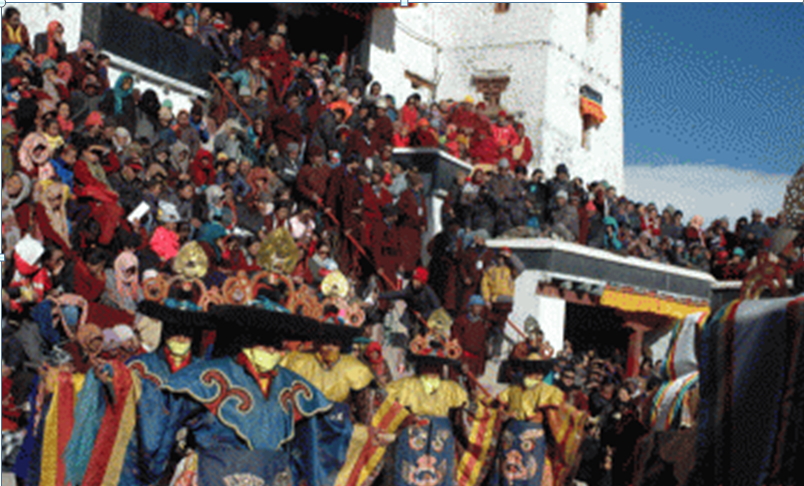Spituk
This is a collection of articles archived for the excellence of their content. Readers will be able to edit existing articles and post new articles directly |
Spituk
By Reach Ladakh, Wednesday, January 9, 2013
[Reach Ladakh]
Leh: The annual two day ‘Spituk Gustor’ began today amidst thousands of spectators and believers. Said to be held since centuries, the festival falls on the 27th and 28th of Tibetan lunar calendar's eleventh month.
“With an aim to remove the obstacles in the present life and the life after death (which we always fear), the monks of the monastery perform mask dance, called chams. Attired with peculiar ornaments and dresses, these chams or the mask dances signify the demarcation of bad omen to infuse in the land –peace, tranquillity and happiness,” said Gen. Thupstan Tsogo, who is the Nyerpa or the manager of Spituk Monastery.
The annual festival or the gustor also marks the victory of virtue over evil. The mask dance performed by the monks represents the guardians, protectors and the gods and goddesses.
"Chams are performed to suppress the inside evils which sow the seeds leading to desire, hatred, ignorance and jealousy. Authenticity this is not a fair, but a religious event where every god and goddess is being offered prayers in different forms for the betterment of mankind” said Mr Norbo Martsey, a renowned scholar/historian of Ladakh.
The Spituk Monastery whose head lama is Kushok Bakula Rinpochey, is known for its collection of Buddhist artefacts. It houses a collection of ancient masks, antique arms, icons and numerous Thanka paintings, all done in vegetable-based colours.
The monastery that dates back to the 11th century is located atop a hill, overlooking the River Indus, around 18 kilometres from Leh, the District Headquarters of Ladakh.
Prayers start seven days before and dances are performed in the main two days. Bag-lung which falls on the 25th of Tibetan lunar eleventh month, was held day before yesterday. On this day the dresses and masks are distributed amongst the monks who perform at the gustor” said Gen Thupstan, who is the Chokki -Lobon or the coordinator/ head of lamas.
Dik or the dress rehearsal was performed yesterday. The festival will end tomorrow with the symbolic termination of evil, depicted by the burning of an effigy.
